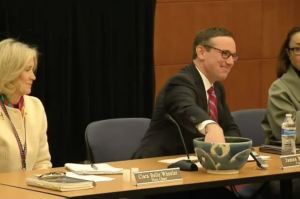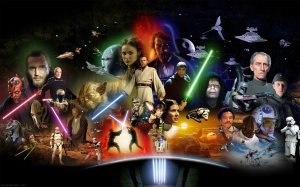Representation
In America, we have a presidential and congressional election coming up in November. I want to take a moment out to incite every American to vote.
Every now and then, it’s helpful to remind ourselves of first principles. In a democratic polity—a “republic” in the sense used in American law and political theory—the people of the polity govern themselves. (Please note that these terms are “small d” democracy and “small r” republic.) The way we do this, in a representative government, is to elect representatives. Since those representatives make most decisions as to law and government, voting in elections is the primary way in which we govern ourselves. It’s kind of a big deal.
The Crucial Hero(es)
In America, voter turnouts, even in presidential elections, tend to be relatively low. Why would people skip their key chance to take charge of their government? I suspect much of this failure to take part in governing ourselves stems from a combination of things: inertia (it takes some little trouble to register and vote), plus a pervasive sense that my one vote doesn’t affect the outcome. Why make the effort if it doesn’t matter?
The logical flaw in this understandable attitude is that things can matter in the aggregate, even if any one item is not the sole decisive element that changes the outcome.
 The stories that inspire us, and help form our attitudes, tend to undermine this recognition and subliminally support our reluctance to participate. A story is more dramatic if everything comes down to the actions of one, or a few, people. If James Bond doesn’t pull off this next stunt, the World Will Come To An End. Will Smith and Jeff Goldblum, alone, deliver the computer virus that takes down the mother ship in Independence Day, which conveniently disables all the rest; the entire tension of the plot is funneled through that one bottleneck, as it were. A few superheroes save the universe—well, half of it—in the Avengers movies. In Netflix’s just-released Enola Holmes movie (mild spoiler), the heroine’s actions save the one person who casts the deciding vote on a British reform act. We love this trope.
The stories that inspire us, and help form our attitudes, tend to undermine this recognition and subliminally support our reluctance to participate. A story is more dramatic if everything comes down to the actions of one, or a few, people. If James Bond doesn’t pull off this next stunt, the World Will Come To An End. Will Smith and Jeff Goldblum, alone, deliver the computer virus that takes down the mother ship in Independence Day, which conveniently disables all the rest; the entire tension of the plot is funneled through that one bottleneck, as it were. A few superheroes save the universe—well, half of it—in the Avengers movies. In Netflix’s just-released Enola Holmes movie (mild spoiler), the heroine’s actions save the one person who casts the deciding vote on a British reform act. We love this trope.
The desire to make everything come down to a few people’s desperate actions can even warp the adaptation of a story. A number of small, but annoying, changes in the plot of Peter Jackson’s Lord of the Rings movies seem to stem from a tendency to have every crucial point depend on the actions of the nine members of the Fellowship. For example, in the books, the Ents meet and decide the time has come to attack Isengard. In the movies, the Ents decide not to act—until Pippin and Merry maneuver Treebeard to where he can see Saruman’s wanton destruction of the forests (on the absurd assumption that the Shepherd of the Trees didn’t know about that already).
![]() In the books, Denethor sensibly sends a messenger from Minas Tirith to Rohan to call for help. But the movies leave it to Gandalf and Pippin to fire up a beacon that transmits the call to Rohan. (The fact that the lighting of the beacons is one of the most terrific scenes in the whole series doesn’t entirely mitigate the plot diversion.) When the Corsair ships sailing up the Great River to Minas Tirith turn out to contain relief for the city rather than further invaders, the movie makes this just Aragorn, Legolas, and Gimli, along with the faceless army of the Dead—rather than a whole array of human reinforcements from South Gondor, as in the books.
In the books, Denethor sensibly sends a messenger from Minas Tirith to Rohan to call for help. But the movies leave it to Gandalf and Pippin to fire up a beacon that transmits the call to Rohan. (The fact that the lighting of the beacons is one of the most terrific scenes in the whole series doesn’t entirely mitigate the plot diversion.) When the Corsair ships sailing up the Great River to Minas Tirith turn out to contain relief for the city rather than further invaders, the movie makes this just Aragorn, Legolas, and Gimli, along with the faceless army of the Dead—rather than a whole array of human reinforcements from South Gondor, as in the books.
Aggregates and Bottlenecks
But when we return to the mundane world, we have to put aside this tempting way of telling a story. We don’t often see this pattern of world-saving heroic acts. We find instead that crucial changes depend on the combined actions of innumerable people, all doing the right (or wrong) things.
The present moment can provide us a heightened appreciation of these unnoticed individual actions. The early days of the COVID-19 pandemic saw an outpouring of support rightly directed to the unsung heroes—doctors and nurses and medical technicians, grocery store clerks, people who make toilet paper—unsung because they are too many to spotlight individually. (Although individual acts of appreciation are still a just way to honor those continuing acts of undemonstrative service.) Indeed, everyone has to act in concert if the pandemic is to be contained.
Peter Jackson’s Gandalf gets the underlying point right in one of the Hobbit movies:
I have found it is the small things, everyday deeds of ordinary folk, that keeps [sic] the darkness at bay. Simple acts of kindness and love. (The Hobbit: An Unexpected Journey (2012), at about 1:42)
Of course, going in and making some marks on a piece of paper doesn’t feel much like heroism—even less so than wearing a facemask. Perhaps it feels a little more dramatic when we’re braving the chance of coronavirus infection to cast our ballots. And if that way of viewing our action as a daring deed spurs us to act, by all means indulge!
But in this kind of case, the only way to achieve anything is by small actions, each of which contributes to a whole. The entire set makes a difference; but there can’t be an entire set unless there are individual acts. In voting, as in picking up one’s trash, or in the innumerable actions that make up a free market, we must carry out the individual actions to produce the aggregate effect.
Turning the Tide in Real Life
If we need further encouragement, we can look to the additional fact that even one vote, or a few, can sometimes make the crucial difference.
 Right here in Virginia, we had an election in 2017 that resulted in a literal tie: an equal number of votes for each candidate. A purely random action had to be used to break the tie. “Each candidate’s name was placed in a film canister; those were then placed into a bowl and one name was drawn.” (NPR, 1/4/2018)
Right here in Virginia, we had an election in 2017 that resulted in a literal tie: an equal number of votes for each candidate. A purely random action had to be used to break the tie. “Each candidate’s name was placed in a film canister; those were then placed into a bowl and one name was drawn.” (NPR, 1/4/2018)
Even a few votes, even one, can make the critical difference, as recounted here and here—notably including “the year 2000 U.S. presidential election, decided by a few hundred votes in the state of Florida” (Jared Diamond, Collapse: How Societies Choose to Fail or Succeed (2005), “Further Readings” for ch. 16, p. 556) Over and above my contribution to the whole, I cannot know in advance whether my vote might not be, in fact, the deciding factor in a hotly contested election.
Moreover, even if the outcome of an election might be clear without my vote, adding to the total is not pointless. In today’s atmosphere of distrust and suspicion, the clearer and more decisive the result, the less opportunity there will be to cast doubt on the results. Every vote added to the total reduces the number of people who will be convinced that the results are false, and thus directly supports the rule of law.
This concern also bears on the notion of voting for a third-party candidate. In the upcoming election, many people may be sufficiently dissatisfied with both major parties to be motivated to cast their ballots for a third-party contender. It might feel virtuous to spurn both parties and “vote one’s conscience” in favor of a candidate who cannot win. But in practice, that action will only serve to make the results less clear, at a time when clarity is vitally needed.
L’Envoi
Voting is much trickier—even perhaps a heroic act, as noted above—in these pandemic times. Nevertheless, there are avenues available by which all of us can safely exercise the franchise.
 For my own locality in Virginia, here’s a guide to voting early, voting by mail, and voting on Election Day. The local paper has a Web site on How to Vote, by state; I haven’t researched that reference in detail, but it may be useful. Here are three articles on drop boxes for ballots.
For my own locality in Virginia, here’s a guide to voting early, voting by mail, and voting on Election Day. The local paper has a Web site on How to Vote, by state; I haven’t researched that reference in detail, but it may be useful. Here are three articles on drop boxes for ballots.
I urge every eligible voter to take part in this crucial action of self-government. Unless you’re actually in the hospital in a coma (or the like), there’s no excuse not to participate.











